Within Volvo, Polestar started out as a performance division in the Swedish Touring Car Championships around 1996. Polestar soon became more closely tied to the Volvo’s we see on the roads with performance based versions of the S60 T8 and XC60 T8 among others. Polestar may still be under the ownership of Volvo and Chinese giant Geely but it has taken on the responsibility of battling with the ever increasing high end premium EV sector. It’s taking the fight directly to BMW, Mercedes, Jaguar, Audi, Tesla and Volkswagen.
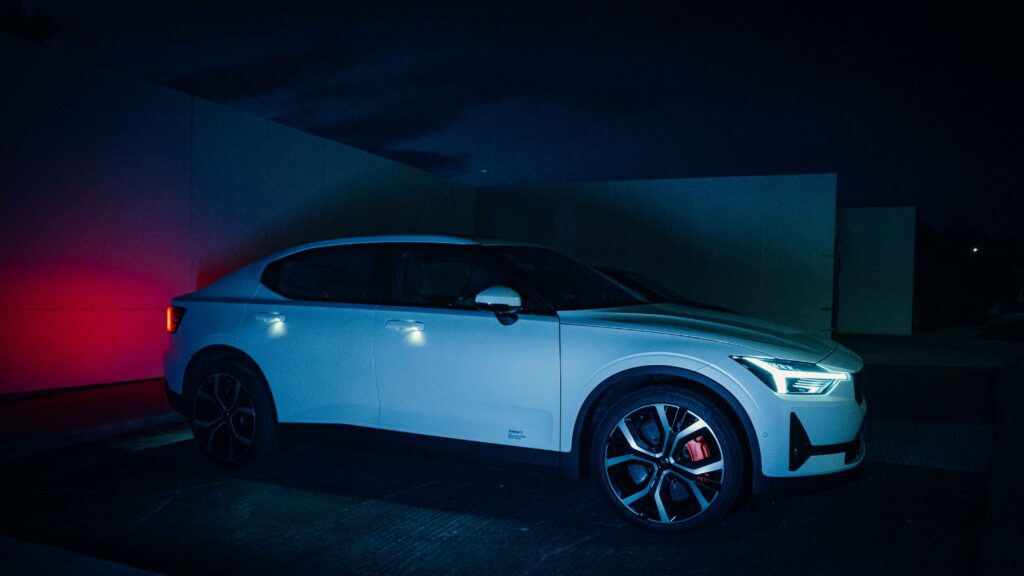
Special mention : Stacks of Swedish cool, low slung, frameless door mirrors and glass roof panel. Fast charging is fast.
Needs work : Transmission tunnel steals space from rear passengers. Slow charging is slow. The key fob is light, could be a little more premium.
| BHP 476 HP | Electric / Auto |
| 0-100 km/h in 4.2 seconds | Road Tax €120 |
| Price: €63,850 As spec’d : €74,295 | Boot space 405 (+40) / 1,095 litres Range 400 km |
The Polestar 2 uses components taken from Volvo’s XC40 and while it may have a saloon bodystyle, it’s actually closer to being a five-door hatchback with an elevated ride height. This gives it a unique shape that’s not quite a crossover, but still offers decent family practicality. Unfortunately this means it still has a transmission tunnel, which takes some space away from rear passengers.
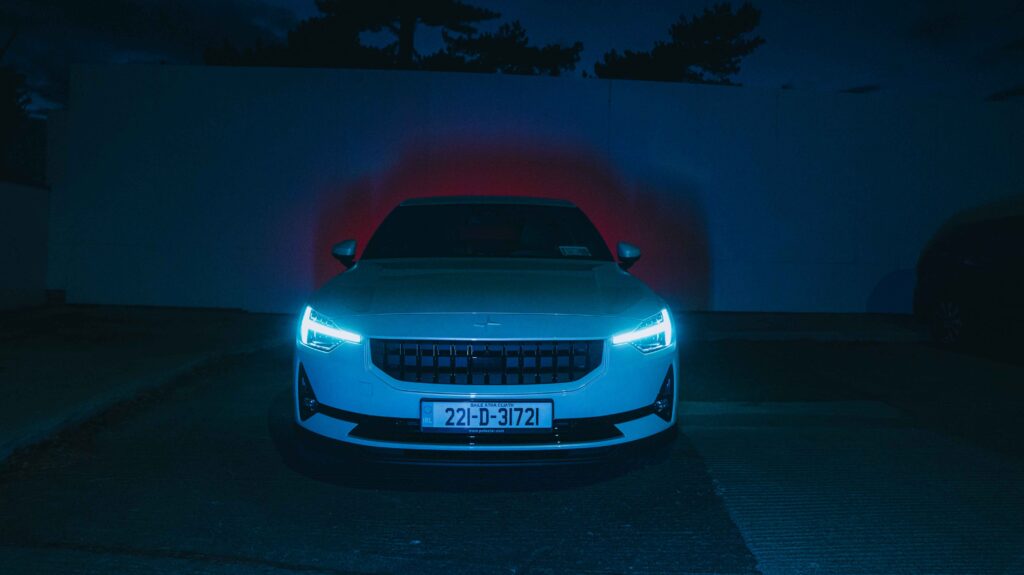
Instead of trim levels, they offer packs. The Pilot pack offers extra autonomous safety kit and upgraded LED headlights. Plus pack includes an upgraded Harman Kardon stereo, a fixed pano sunroof, power-adjustable front seats and a heated steering wheel. The Performance pack adds Brembo brakes, Ohlins dampers and 20-inch forged alloys. And there’s also gold-coloured seat belts to match the sport brake calipers too.
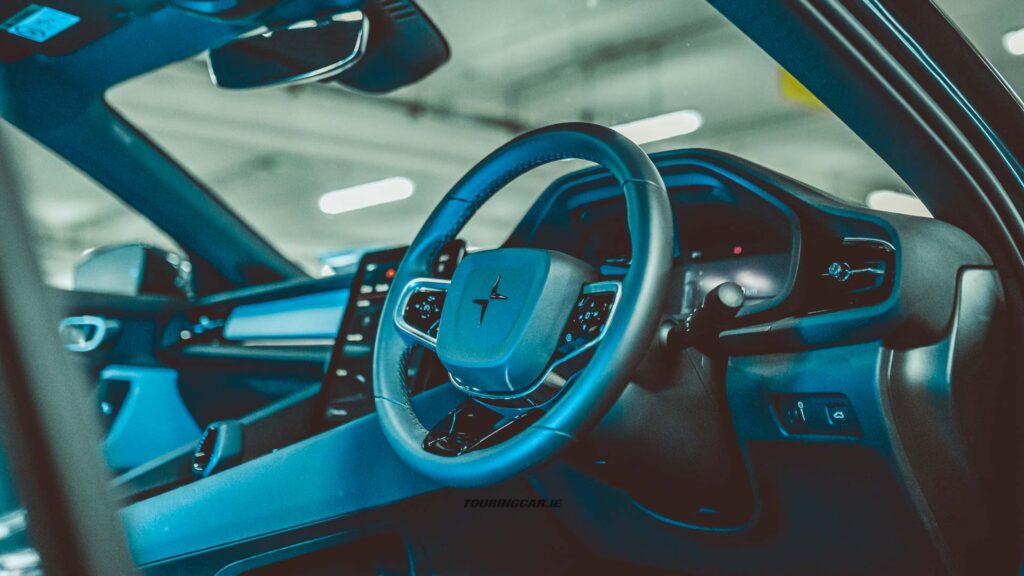
The Polestar 2 is a decent handling car and is fun to drive, despite its hefty 2.2 tonne kerbweight. The entry level versions have a single electric motor driving the front wheels, with a choice of two battery sizes: the smaller being the Standard Range and the latter the Long Range. The dual motor version adds a second electric motor on the rear axle, giving the Polestar 2 more power and four-wheel drive. The single-motor feels punchy around town and at motorway cruising speed. It takes around 7.4 seconds to get from 0-100 km/h, while the dual motor unsurprisingly takes just 4.7 seconds. If you really need something much faster, you’ll need to pay something in the region of Porsche’s Taycan territory.
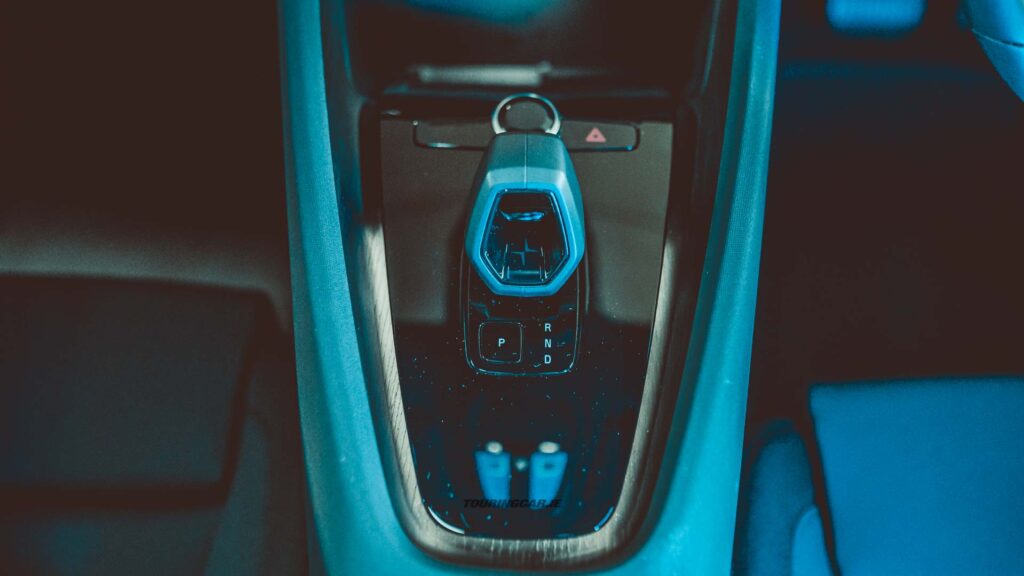
The Standard Range model has a 66kWh battery, has 170 kW / 231 hp and gets around 440 kms (470 WLTP) from a single charge. The Standard Range can accept up to 115kW from a CCS charger, for a 10-80% charge taking up to 35-40 minutes.
The Long Range accepts 130kW of charging power, for a 10-80% top-up of the larger battery in around 30 minutes. A full 0-100% charge at home using a 7kW wallbox will take around 11 hours in the Standard Range or roughly 12 hours in Long Range. If you get stuck, slow charging using the granny cable, a full charge could take well over 24 hours. Realistically, a 50kW feed will provide you with an 80% charge in just over an hour, as the number of rapid chargers currently available is limited but growing. So if you have your own home charger installed, the majority of the time, this will more than suffice if topping up overnight.
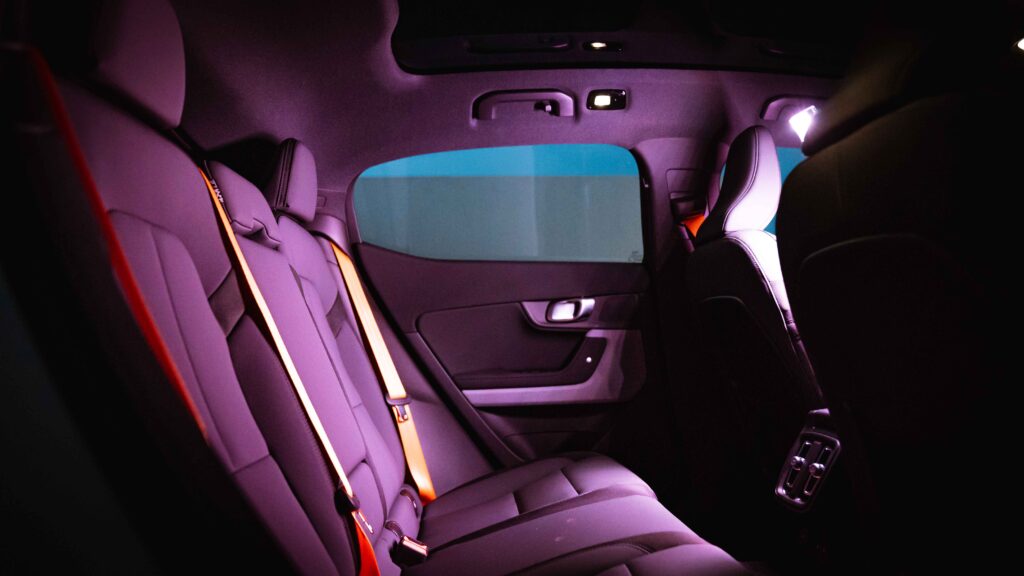
All versions of the Polestar 2 come with lots of kit including dual-zone climate control, rain-sensing wipers, heated front seats, keyless entry, keyless start (it’s activated by the driver sitting in the seat) and a hands-free electric tailgate. There are a handful of individual options, but these are limited to metallic paint, 20in alloys and a semi-electric folding tow bar. Consumers have a choice of upholstery/interior trim combinations and can select the Pilot, Plus or Performance packs at extra cost. Each pack adds lots of extra kit, from safety to more luxury and equipment designed to improve the entire experience. You can’t add much personalisation but the cars already stand out on their own merit.
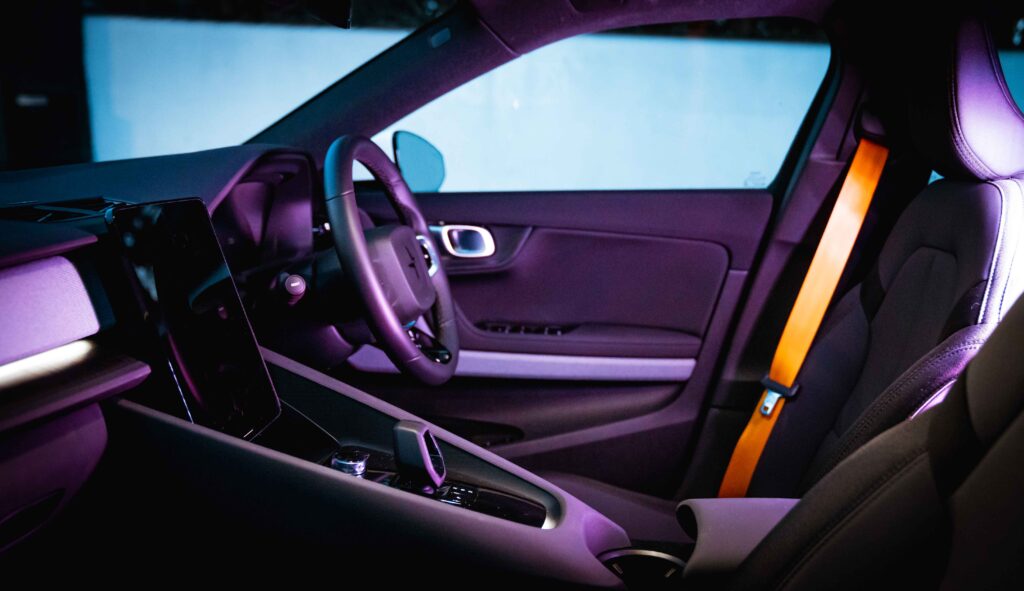
The interior upholstery is made from a 100% vegan material known as WeaveTech. You can, if you wish, option ventilated leather trim but this will come at an extra cost. The Polestar 2 has a good driving position and there’s plenty of electric adjustment for the seat, including lumbar support and as part of the ‘Plus Pack’ you get a memory seat function.
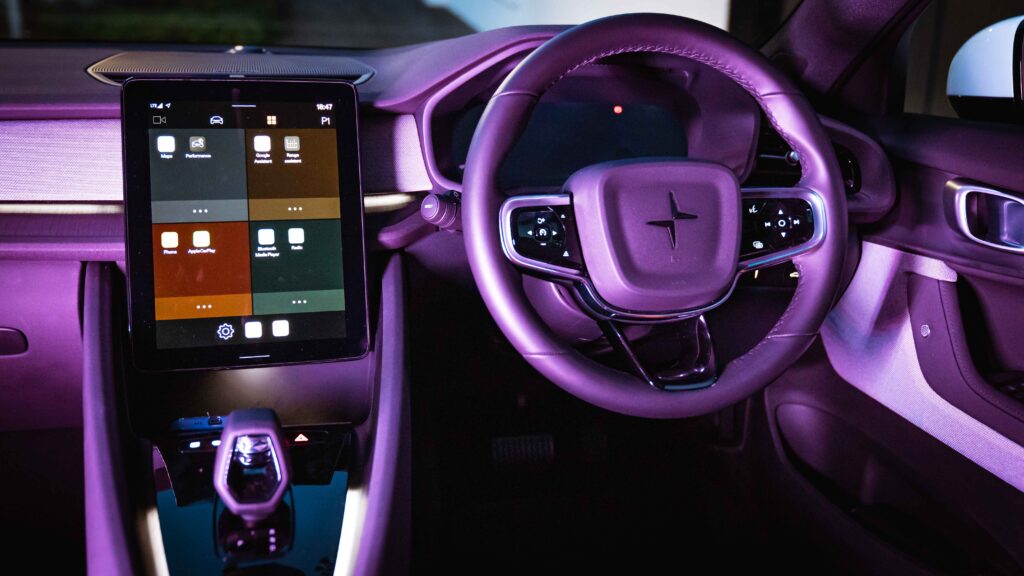
The infotainment OS has been farmed out to Google, the system loads quickly, brings up postcode searches or other specific menus with ease, and similarly to your mobile phone app, it adapts your route to real-time traffic changes. On the home screen you’re shown shortcuts to Google Maps, Google Search, phone and media controls. Climate controls are adjusted from the base of the screen and access to the drive settings are from a slide down menu at the top. It’s simply laid out and is much more user friendly than the menu’s offered in Teslas.
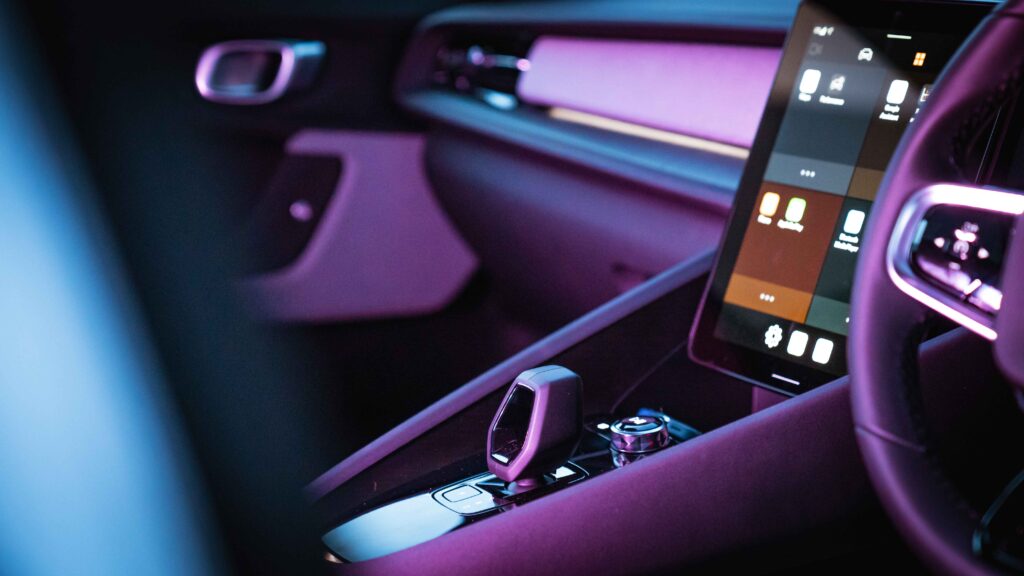
There’s decent storage, a cubby under the central armrest, and door bins. Strangely the cup holders are placed in an odd position for the front passengers with one for the driver just in front of the arm rest and the second is available under the arm rest which limits the size of cup or bottle you can place there. Usually the arm rest would be earmarked for valuables you may wish to keep out of view or for big packets of hand wipes etc.
Rear space is smaller than a Tesla Model 3 and definitely less than in an EV6 or Ioniq. The rear seatbacks fold in a conventional 60/40 split leaving a 1,095 litres of space with the seats down. With the seats up there’s 440 litres split between a 35-litre front space and the 405-litre boot. There’s extra storage under the Polestar 2’s main boot floor for the charging cables, you can also use the small space under the bonnet to store them.
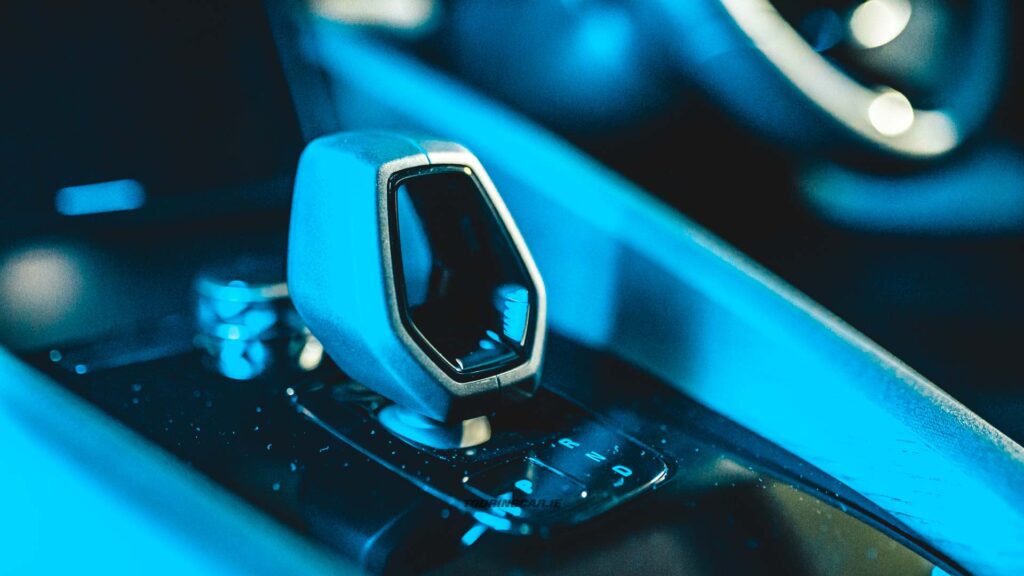
The Polestar 2 is fastback-styled with stacks of Swedish cool. It has a classy, Volvo-like feel to the interior, with frameless door mirrors and glass roof panel adding to the premium design and giving it an air of luxury. The charging times are good if you have access to fast chargers, if not, they’re incredibly slow which is why we’d recommend having a home charger installed for those quick top ups. It’s also much cheaper in general to charge at home than when you’re travelling further afield. While its weight compromises agility and efficiency and there’s a continuous whine while driving, the Polestar 2 has great design, classy interior and decent range with good running costs.
